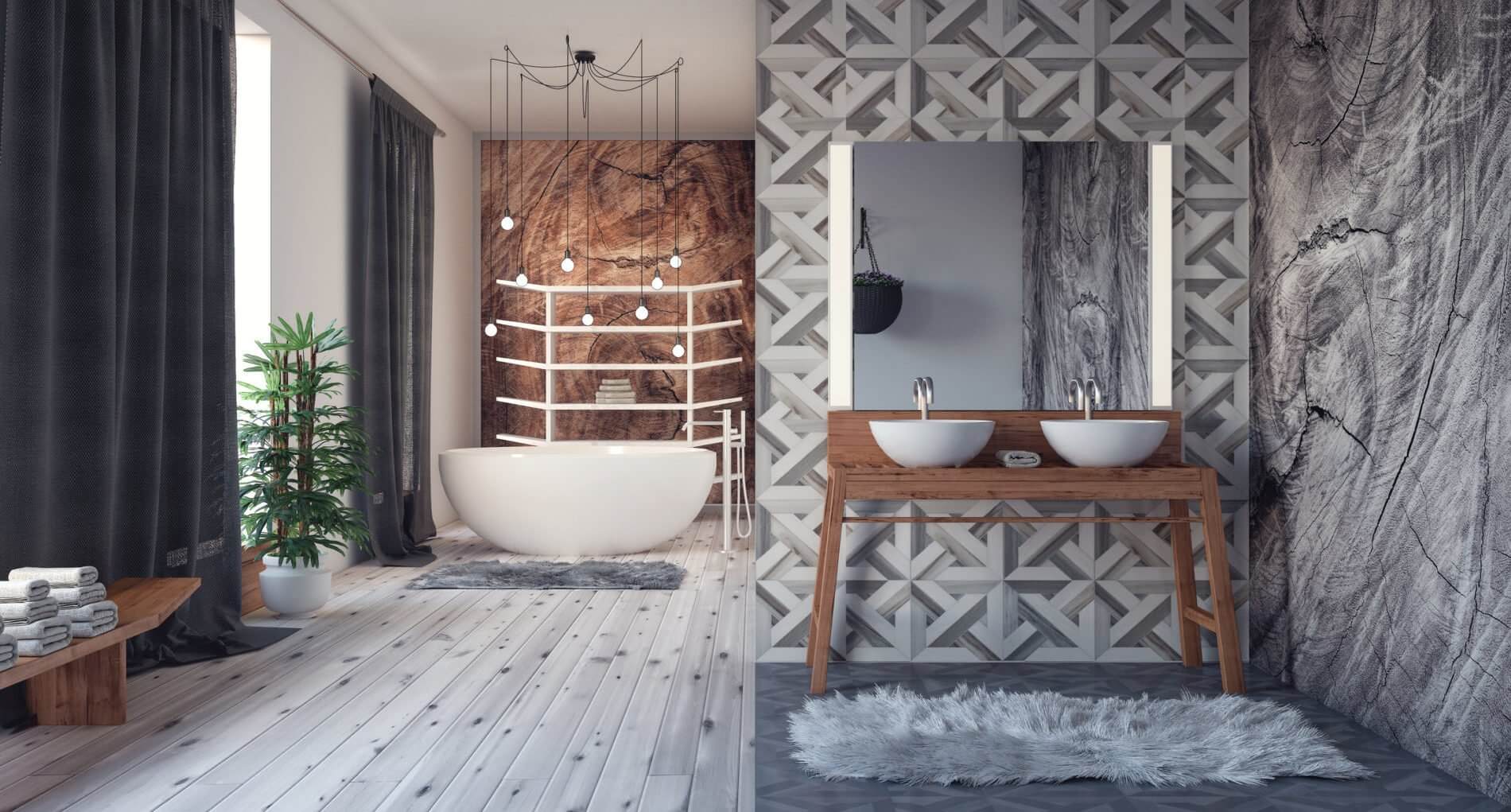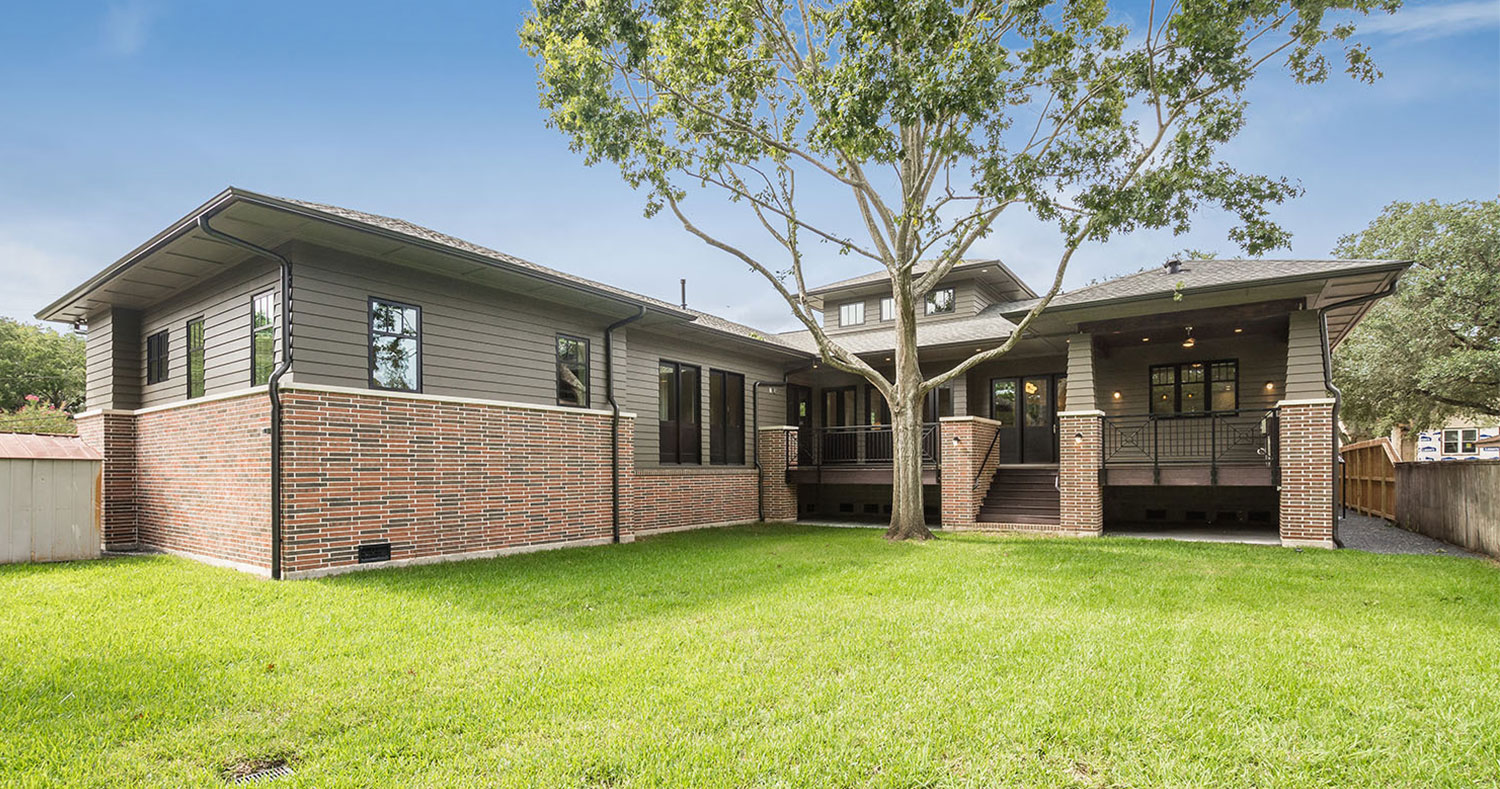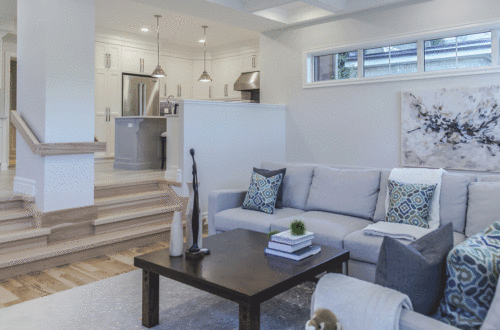A homeowner has many types of flooring to choose from when it comes to their kitchen. Even wood is an option. Here are the pros and cons of some types of kitchen flooring:
Hardwood
Hardwood is wood that is harvested from deciduous trees such as oak, maple and birch. Hardwood floors can be solid or engineered. Solid hardwood planks are made of one piece of wood while engineered planks are made of several layers of a less valuable wood bonded together with the quality wood on top. Engineered wood tends to be tougher than solid wood, but can’t be resurfaced as often.
The beauty of a well-kept hardwood floor is matchless, and it adds much to the resale value of a house. One trick to add interest is to mix the lengths and widths of the planks.
One drawback of hardwood flooring is it’s expensive and needs at least a moderate amount of care in the heat and humidity of a kitchen. Hardwood needs to be sealed to guard against moisture, dings, dents and scratches. Our professionals at Alair Homes tell our customers that one way to extend the life of a hardwood floor in a kitchen is to lay mats and area rugs over it, especially in high traffic areas.
Softwood flooring, by the way, is made from coniferous trees such as pine, larch and cedar. Don’t be fooled by the name softwood, for some of these floors are quite hard indeed.
Tile
The latest technologies have allowed tile to mimic everything from wood to natural stone to leather. Tile can also be made in a variety of patterns, textures and colors. This almost guarantees that a tile floor can be found or made to match the decor of any kitchen.
Porcelain tile is fired at such high temperatures that it is waterproof, and even ceramic tile resists water. Tile that is made from porous materials such as terra-cotta need to be sealed to protect against stains, and if there is grout between tiles, this also needs protection. Otherwise, tile is durable, tough and doesn’t need much care. The one drawback with ceramic tiles are that they are cold and hard to walk on. Again, this can be solved with the placement of mats in high traffic areas.
Standard tile is less expensive than wood or natural stone, but porcelain is expensive. Tile can also crack or chip if something heavy falls on it.
Vinyl
Vinyl has been a staple of flooring for decades, and it would seem to be the perfect material for a busy kitchen. It does not chip or crack and is so easy to install that a layperson can place vinyl tiles over a weekend. It has no problems with moisture and resists scratches and scuffs. It is soft beneath the feet. It is also about the least expensive flooring to be found outside of one made of bare earth, though high-end vinyl can be a bit pricey.
The drawback of vinyl is the softness that feels so good to the feet. It is a good idea to place cups beneath the feet of heavy furniture to guard against indentations, and eventually the ghosts of footprints may appear on areas that get a lot of traffic.





